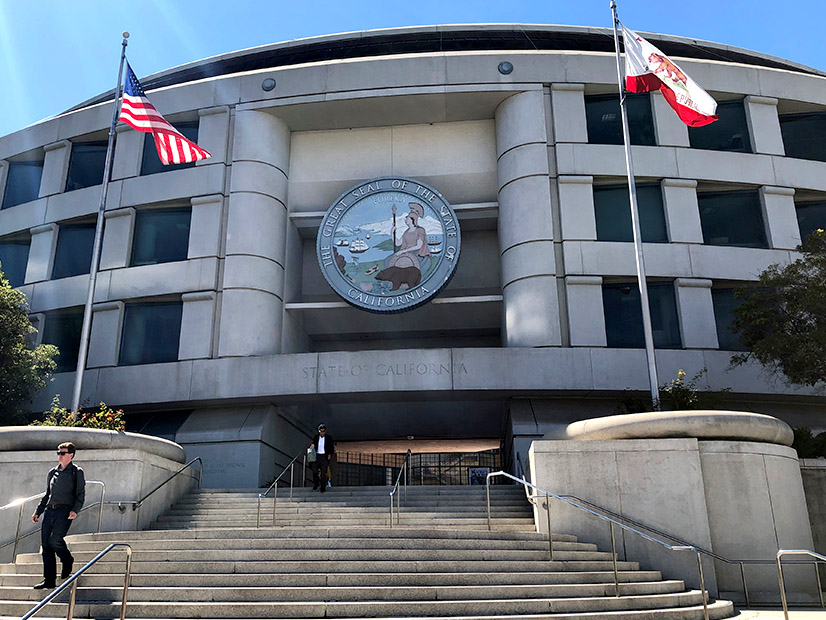The California Public Utilities Commission is questioning how much more ratepayers can stomach after approving back-to-back $1 billion rate increases for Pacific Gas and Electric and substantial rate hikes for the state’s two other large investor-owned utilities.
The increases were mostly driven by high natural gas prices and FERC transmission-rate requirements, among other factors, commissioners said.
“We’ve seen significant rate increases in each of the three major investor-owned utility service areas in the last few months,” Commissioner Darcie Houck said Feb. 10 before “reluctantly” approving the second major rate hike to hit PG&E customers since January. “Ratepayers have justifiably voiced concerns and objections to these rate increases.”
“We as a commission must carefully consider what and whether ratepayers can withstand regarding further rate increases, and we need to explore innovative methods to help curb rate increases and to protect the most vulnerable Californians,” Houck said.
The CPUC has scheduled an en banc hearing on utility rates for Feb. 28 and March 1 intended to examine proposals to control costs and mitigate rates. The two-day session follows a similar hearing last year attended by CAISO governors, state energy commissioners and legislative leaders, all concerned with spiraling costs. (See Calif. Worries High Rates Could Hurt Climate Efforts.)
The increases that took effect in January and others that start in March will worsen the situation, CPUC commissioners said.
In PG&E’s case, the CPUC approved a $769 million increase to the utility’s Energy Resource Recovery Account (ERRA) and a $358 million addition for ERRA under-collection in 2021, adding more than $1.1 billion to PG&E’s 2022 revenue requirement.
It will result in a nearly 11% rate hike for residential customers, averaging $16.37 per month, and larger increases for commercial and industrial users.
The changes, approved Feb. 10, take effect March 1.
“An industry and worldwide increase in natural gas commodity prices in 2021 and into 2022 has increased costs and is a main contributor to the increase approved today, which allows PG&E to recover from ratepayers the costs PG&E incurred to purchase power for customers in 2021 and forecasted costs for power in 2022,” the CPUC said in a statement following the decision.
The CPUC said it could re-examine the decision later this year if gas prices fall.
The new increase came on top of an 8% rate hike that took effect Jan. 1, averaging $11.29/month for PG&E residential customers.
The main drivers were a $671 million increase in FERC-approved transmission rates and a $284 million increase in PG&E’s general rate case for program costs, the CPUC said. The commission also granted PG&E $173 million in additional revenue to cover losses from unpaid bills during the pandemic and additional funds for wildfire insurance premiums.
“Ratepayers in PG&E territory have had a particularly difficult year and are questioning these increases along with safety concerns, given the many catastrophic wildfires suffered over the years,” ignited by PG&E equipment, Houck said.
“In addition to energy fuel costs rising, we are also facing challenges to grid infrastructure upgrades and ensuring sufficient resources to meet our clean energy goals,” she said. “All of these items require investment. All this said, ratepayers are not an unlimited source of funds to cover any and all costs.”
SCE, SDG&E
For Southern California Edison, the CPUC approved a January rate increase of 2.9%, working out to an average monthly bump of $3.99 in residential bills.
The causes included the addition of $385 million to SCE’s general rate case for wildfire mitigation work, including vegetation management, installing covered conductor, and upgrades to SCE’s transmission and distribution grid. The CPUC also authorized an increase of $238 million for transmission capital, operation and maintenance costs in 2022, based on prior approval from FERC.
SCE’s purchase of $1 billion in liability insurance, as required by state law, contributed to the rate hike, the CPUC said.
CPUC-approved increases that take effect in March reflect high natural gas prices, the recovery of $401 million in wildfire prevention costs and $77 million for unpaid bills during the pandemic.
In December, the CPUC approved $1.2 billion in rate recovery for SCE’s procurement of 536 MW of energy storage for summer reliability. About $85 million of that will be collected in 2022, the CPUC said.
Starting in March, SCE residential customers can expect an additional 7.7% bill increase, adding $11.48 a month on average.
Between the January and March rate hikes, SCE residential customers will be paying nearly 11% more for electricity this year, or about an extra $12.50 per month.
San Diego Gas and Electric residential bills rose by 11.4% in January because of a $273.5 million boost to the utility’s revenue requirement, mostly based on high gas prices, and $38.5 million for transmission costs authorized by FERC, the CPUC said. Insurance premiums of $65 million also contributed to the higher rates.
CPUC President Alice Reynolds and commissioners Genevieve Shiroma and Clifford Rechtschaffen also expressed concern about rising electricity costs.
Rechtschaffen said the CPUC must continue working on the issue, including at the upcoming en banc hearing.
“We’re looking for innovative ideas to improve affordability, especially for low- and moderate-income customers,” Rechtschaffen said. “We really need to dig deeply into some of these solutions.”

